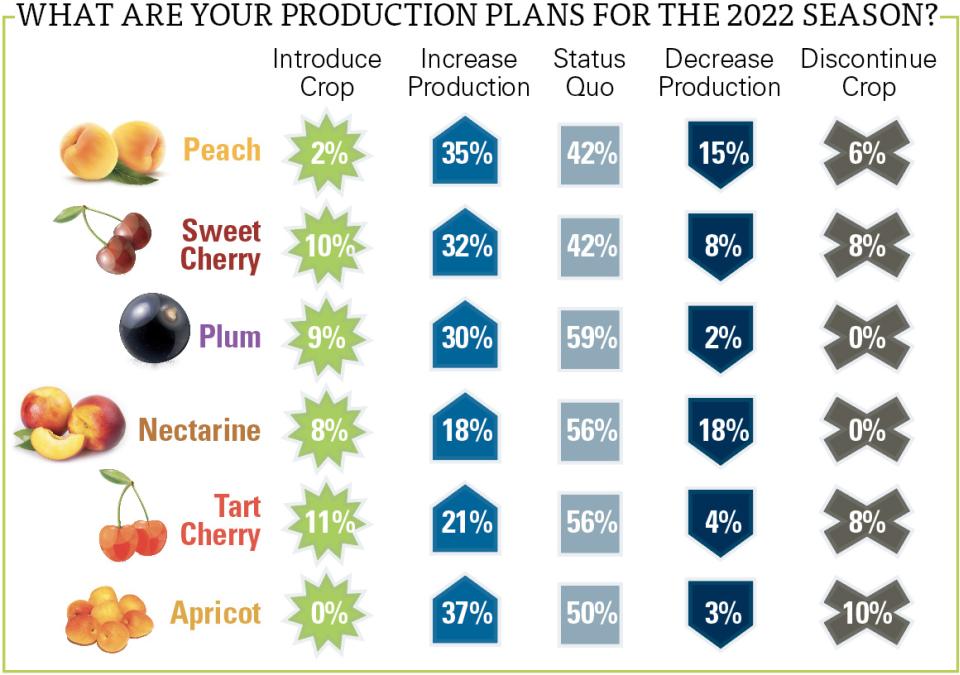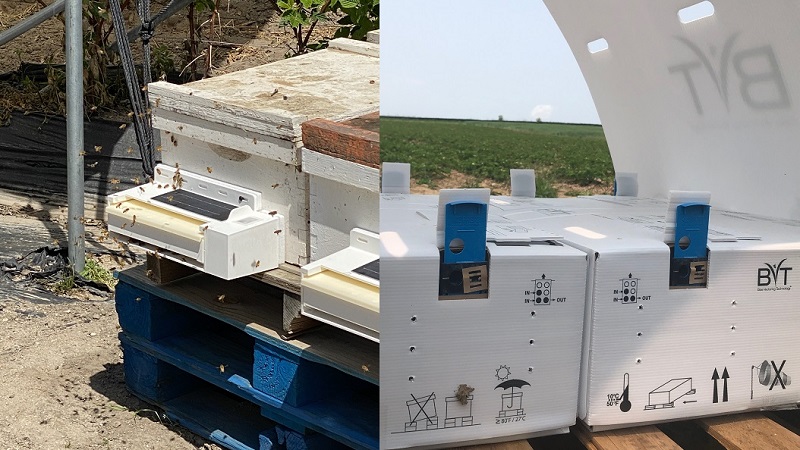Fresh Starts Signal Sense of Assurance for Cherry Growers
The cherry industry appears to be in the midst of an identity crisis, according to the numbers in American Fruit Grower’s annual State of the Industry survey.
While 8% of cherry growers across the U.S. are discontinuing that crop in 2022, an even larger number, at 10%, are introducing the fruit. Not only is this good news for an industry that could always use some good news, the percentages apply almost evenly to both versions of the fruit — tart and sweet.
Among the 22 types of fruit tracked in the survey, only three citrus entries — lemon, grapefruit, and mandarin/tangerine — are just as prevalent this season in terms of both entering and exiting the orchard.
Time will tell which decision will be the wise one. In the meantime, growers can only hope the upcoming years will be kinder than the 2021 growing season.
EXTREME HEAT
Last year was a tough one for sweet cherry growers in the Pacific Northwest. They had to watch their fruit fry amid the triple-digit temperatures of a record-setting heat dome.
“The sustained summer heat, especially early in the growing season, meant we were struggling all summer to provide enough water to the trees in irrigation rotations,” a Washington state grower says.
Success wound up varying from block to block, the grower adds. “Old-school plantings with large trees and solid-set sprinklers fared well,” he says. “Young, streamlined tree formations with drip irrigation were practically raisins at time of harvest.”
The heat dome, as well as a freeze and frost already this growing season, has affected an Oregon grower’s cherry crop and led his plum crop to be “almost nonexistent.” Fortunately, the grower’s trees do not seem to have sustained permanent damage, he says.
Another Washington grower notes a significant decrease in cherry production because of the heat dome, not to mention an effect on apple storability, the extent of which is not entirely known at this point, he says.
“The biggest issue was the heat,” a Washington grower says.
“We handled it by harvesting cherries at night.”
Meanwhile, hard freezes during blossom time killed one Pennsylvania grower’s entire cherry crop.
OTHER CONCERNS
A pair of Washington growers lament having to deal with various supply chain issues.
“We’re trying to adapt,” one grower says. “It’s tough to do when the insecticides are required outside of growing season to control vectoring insects of Western-X in cherries.”
Another Washington grower points out uncertainty over this year’s cherry and pear crops already based on shortages of propane and delivery trucks and drivers during the lengthy 2022 frost season.
Tariffs, meanwhile, are on the mind of a Montana sweet cherry grower. “We lost market share on the world market,” he says.

FRUIT QUALITY
Cherry growers were asked what can be done to ensure that consumers consistently receive a good piece of fruit. While one respondent from Washington notes that cherries do not seem to experience this problem as much as other stone fruit, fellow cherry growers offer their opinions.
“The big growers are not producing and selling quality fruit,” a Michigan tart grower says. “It is picked about 10 days before it should be, but the smaller growers with quality fruit are not wanted because you’re not in the clique.”
The Montana grower specializes in older varieties that are known for their taste. “The obsession with oversized cherries by the industry has created a market where customers do not repeat buy because their initial fruit is not tasty,” he says. “It hurts regions that produce cherries later in the season.”
The weather has a lot to do with the flavor of cherries, an Oregon grower says. “I don’t think we can ensure good flavor,” he says. “But we do use helicopters and wind machines to keep the rain off ripe cherries.”
A Washington grower praises cherry optical sorting. “It is moving us closer to ensuring quality fruit gets to retail,” he says.
Finally, enforcing Brix minimums on sweet cherries receives the endorsement of another Washington grower.










